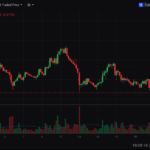In an interconnected world, no economy operates in isolation—especially not the United States. As the largest global economy, America’s trading relationships shape everything from stock prices to interest rates and commodity flows. But how exactly do foreign trade partners impact U.S. markets?
1. Trade Wars Shake Investor Confidence
When tariffs are introduced or increased—like during the U.S.-China trade war—markets often react immediately. Stocks tied to manufacturing, agriculture, and exports tend to suffer. Why? Because increased costs or reduced foreign demand threaten corporate profits.
📉 Example: In 2018, the Dow Jones dipped by over 600 points in a single day after China retaliated against new U.S. tariffs.
2. Strong Export Partners = Bullish Sectors
On the flip side, strong trade ties boost sectors. For instance, robust exports of semiconductors to South Korea or automobiles to Europe often signal health in the tech and manufacturing industries. Currency stability and predictable regulations among allies foster investor optimism.
🏭 Sectors like industrials and energy thrive when trade flows remain uninterrupted.
3. FX Volatility and Global Demand
Trading partners affect currency valuations. If America’s key importers experience recessions or currency collapses, demand for U.S. goods slows—and the dollar may strengthen unnaturally, hurting exporters. This domino effect directly impacts earnings for multinational companies.
💱 Forex traders often hedge positions based on trade data and foreign central bank decisions.
4. Geopolitical Tensions and Supply Chains
When relations sour—like between the U.S. and Russia or during Taiwan tensions—markets price in geopolitical risk. Disrupted supply chains, especially in tech and rare-earth materials, can derail sector performance and delay innovation.
🧠 Investors must consider trade risk as part of portfolio diversification.
Conclusion
America’s trading partners aren’t just diplomatic headlines—they’re key market catalysts. From tech to agriculture, the global flow of goods, services, and capital drives price movement, investor sentiment, and economic forecasts.







